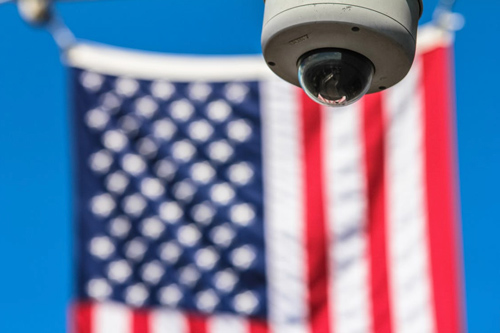Security Cameras: The 5 Types You Need to Know About
Security is becoming a pressing concern for individuals and businesses as the global economy continues to flounder. Business owners now use advanced security systems to protect their assets from thieves and bad weather.
And if you take one look at PTZ camera prices, you’ll understand why consumers are paying top dollar for security. However, choosing the appropriate, pocket-friendly camera for your home, warehouse, or shop has also become challenging.
Read this article to find out the best security cameras that will protect your property and give you peace of mind.
PTZ cameras
A PTZ (pan-tilt-zoom) camera is a device that allows the camera operator to monitor the space under surveillance. As the name suggests, this camera enables operators to pan, tilt, and zoom the camera to get a better view of the space.
And the good thing about PTZ cameras is that you don’t have to operate the levers to view more images manually. Alternatively, you can control the camera remotely by outlining patterns or trajectories for extensive movement and coverage.
PTZ cameras often contain digital or optical zoom. With the digital PTZs, you can zoom in on video recordings and archive footage to get a clearer picture. By contrast, the optical zoom PTZ cameras allow you to zoom in on location in real time.
Due to the versatility of PTZs, they are perfect for large facilities that require lots of security personnel and equipment to keep under surveillance.
Box security cameras
As the name shows, box security cameras contain camera lenses in a box. But it is not all that simple; the box container has to resist the elements using weatherproof housing, which makes it perfect for outdoor spaces.
Box cameras are visible and “up in your face” which makes them the appropriate fit for home security cameras. If you want intruders to stay off your property, a properly-placed box camera can act as a deterrent.
In addition, box security cameras provide ample room for customization. The detachable lenses give you control over the image quality and coverage angle. In essence, you can substitute the regular lens for a professional one, as well as other changes according to your preference.
Even though the box camera’s hardware design stays in a fixed position, which limits its range of coverage, it compensates for these shortcomings with custom features and superior picture quality.
Dome security cameras
You know those cup-shaped devices that perch onto the ceiling in buildings?
Those are dome security cameras. The “dome” tag comes from the hemispherical shape, which looks like an inverted dome.
When it comes to surveillance with subtlety, dome cameras excel over box cameras. Although they are more susceptible to the weather, you can still use them outdoors.
In spaces that require top-notch security, you can install a dome camera with additional anti-vandal housing. You can also cover them in plastic without limiting the coverage angle or reducing the picture quality and visibility.
Dome cameras are also customizable, providing a varied range of coverage. With varifocal lenses, you can switch between zoom ranges to get a better image in real time.
The only drawback to dome cameras is that the lens usually reflects light rays from nearby sources, providing a blindspot that criminals can exploit.
Panoramic cameras
When you build security systems with cameras, you want to cover every possible inch of the building or space without as little equipment as possible. And that’s why you need a panoramic camera.
Apart from that, panoramic cameras use fisheye lenses that have coverage angles close to 180 degrees. So, two cameras can cover an entire space if installed correctly. And as a result, you can save costs on buying multiple CCTV cameras.
The only issue with panoramic viewing is that fisheye lenses distort images, especially at the edges. And thus, even if you can detect an intruder, you’ll still struggle to identify them if they are not in the center of the frame.
Multi-image or multi-sensor cameras
Any CCTV camera that contains multiple independent lenses at the same time is a multi-sensor camera.
How does it work?
All lenses are placed at different angles to cover a wide 180-degree field of view. A central processing software then ‘stitches’ the individual images into one footage. Since the final footage comes from multiple sources, the resulting video has superior fidelity.
Multi-sensor cameras are common in front of government buildings, airports, parking spaces, and ports.
Conclusion
Anyone who cares about security needs a CCTV camera that fits the space. Whether you want a device that deters intruders or one that performs its functions covertly, you can find the perfect fit for your outdoor or indoor space.






















